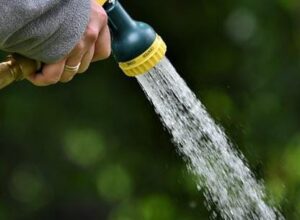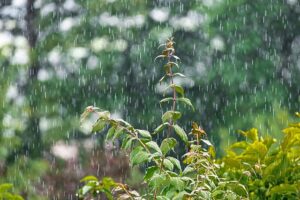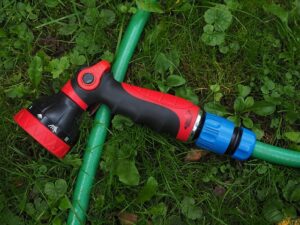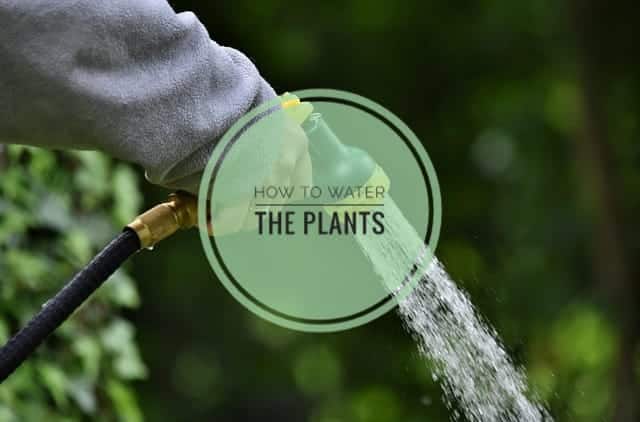Have you ever lost a plant even though you watered it every single day? Many gardeners face this heartbreaking situation. We think daily watering equals love and care, but sometimes plants die despite our best intentions.
The truth is that learning how to water plants is not about frequency alone. It’s about timing, method and understanding what each plant really needs.
WHY WATERING MATTERS
Water is more than just hydration. It carries nutrients through the soil, supports cell structure and helps plants stay cool on hot days.
Without it, growth slows and leaves weaken. Overdoing it is equally harmful because roots suffocate in soggy soil.
- Transports essential minerals to the plant
- Keeps stems and leaves firm through cell pressure
- Regulates temperature during hot conditions
When we master watering, plants thrive naturally without constant struggle.
UNDERSTANDING PLANT NEEDS
Every plant has different water requirements. Succulents thrive on neglect, while herbs wilt without regular attention. Indoor plants dry slowly, while outdoor plants face wind and sunlight that demand frequent checks.
- Succulents: minimal water, drought-tolerant
- Herbs: frequent watering, shallow roots
- Indoor plants: slower evaporation, less water needed
- Outdoor plants: higher exposure, frequent checks
Observing each plant closely helps us avoid both extremes: underwatering and overwatering.

SIGNS YOUR PLANTS NEED WATER
Plants speak through their leaves and soil. Dry soil, drooping stems, or brittle leaves usually mean thirst. Yellow leaves often indicate the opposite—too much water.
- Wilted or drooping leaves = thirsty plant
- Crispy brown edges = prolonged dryness
- Yellow, soft leaves = waterlogging problem
Checking soil moisture with your finger is a simple way to avoid guesswork.
HOW OFTEN SHOULD YOU WATER?
There’s no universal schedule. Frequency depends on the type of plant, soil, pot size, and climate. A succulent may need water once in two weeks, while lettuce may require daily moisture.
- Hot summers: frequent, sometimes daily watering
- Rainy season: less water due to natural moisture
- Winter: reduced watering as growth slows
The golden rule: water when the topsoil feels dry, not according to a calendar.
BEST TIME TO WATER PLANTS
Timing is as important as quantity. Watering in the morning gives plants strength for the day and reduces evaporation. Evening watering is fine too, but lingering dampness may invite pests.
- Morning watering = best absorption
- Evening watering = acceptable but riskier
- Afternoon watering = least effective due to evaporation
A simple change in timing can transform plant health.

DEEP WATERING VS. SHALLOW WATERING
Shallow watering wets only the surface, forcing roots to stay near the top. Deep watering reaches the lower soil, encouraging stronger, deeper roots.
- Shallow watering = weak root system
- Deep watering = strong, resilient roots
- Best practice = fewer but thorough sessions
It’s always better to water deeply twice a week than sprinkle lightly every day.
WATERING METHODS
Choosing the right method makes watering easier and more efficient. Different plants and settings benefit from different approaches.
- Direct Watering: Simple, using a can or hose at soil level
- Drip Irrigation: Slow release to roots, saves water
- Bottom Watering: Pots absorb water from trays below
- Misting: Increases humidity for tropical indoor plants
Experiment and pick the method that suits your plants and lifestyle.
WATER QUALITY MATTERS
Not all water is the same. Tap water works for most plants, but some are sensitive to minerals and chemicals. Rainwater is the purest and most eco-friendly choice.
- Let tap water sit overnight to release chlorine
- Use rainwater whenever possible
- Avoid hard water for delicate species
Better water means healthier roots and stronger growth.

AVOIDING OVERWATERING
Too much water is one of the most common plant killers. Constantly wet soil suffocates roots and causes fungal diseases.
- Ensure pots have proper drainage holes
- Allow topsoil to dry before the next watering
- Watch for yellow leaves as early warning
Remember: plants prefer slight dryness over soggy soil.
WATERING INDOOR VS. OUTDOOR PLANTS
Indoor and outdoor plants face different conditions. Indoor ones are sheltered, so they lose less water. Outdoor ones deal with wind, sun, and fluctuating temperatures.
- Indoor plants: water once a week or less
- Outdoor plants: check daily in summer
- Container plants: dry out faster than ground soil
Adapting your routine prevents unnecessary losses.
WATERING SEASONALLY
Watering needs shift with the seasons. Adjusting ensures plants get what they need year-round.
- Spring: more water as growth begins
- Summer: frequent deep watering for survival
- Autumn: gradually reduce frequency
- Winter: minimal water since growth slows
Plants follow nature’s rhythm, so watering should too.
HOW TO WATER DIFFERENT TYPES OF PLANTS
Each type of plant has unique water preferences. Knowing these saves time and prevents stress.
- Succulents & Cacti: sparing, only when fully dry
- Flowering Plants: consistent moisture during blooming
- Vegetables: deep, regular watering improves harvest
- Herbs: moist but never soggy soil
- Trees & Shrubs: occasional deep soaking for strong roots
One routine cannot fit all. Tailor care to plant categories.
TOOLS THAT MAKE WATERING EASY
The right tools simplify gardening and improve efficiency. They also reduce mistakes.
- Long-spout watering cans for potted plants
- Adjustable hoses for garden beds
- Drip irrigation for consistency
- Moisture meters to measure soil dryness
- Mulch to lock in soil moisture
Investing in simple tools makes plant care stress-free.
COMMON WATERING MISTAKES
Many beginners unknowingly harm their plants. Being aware of common errors helps avoid them.
- Watering on leaves instead of soil
- Using ice-cold water directly from tap
- Following rigid schedules instead of checking soil
- Ignoring drainage in pots
- Assuming all plants need equal water
Correcting these habits makes a huge difference.
TIPS TO CONSERVE WATER
Sustainable gardening means saving water while keeping plants healthy. Small steps go a long way.
- Collect and store rainwater
- Reuse kitchen rinse water for non-edible plants
- Apply mulch to reduce evaporation
- Group plants with similar needs together
- Use drip irrigation for efficiency
Conservation benefits both the environment and your garden.

WATERING NEEDS OF COMMON PLANTS
| Plant Category | Watering Frequency | Soil Condition Preferred | Special Notes |
|---|---|---|---|
| Succulents & Cacti | Once every 10–14 days | Completely dry before next watering | Use “soak and dry” method to avoid rot |
| Herbs (Basil, Mint) | Every 2–3 days in summer | Slightly moist, not soggy | Harvesting increases water needs |
| Leafy Vegetables (Spinach, Lettuce) | Every 1–2 days | Consistently moist soil | Lack of water makes leaves bitter |
| Fruiting Vegetables (Tomato, Cucumber) | 2–3 times per week | Moist but well-drained | Deep watering improves fruit yield |
| Flowering Plants (Roses, Marigolds) | 3–4 times per week | Moist soil, avoid waterlogging | Extra water needed during blooming |
| Indoor Houseplants | Once a week on average | Topsoil should dry before watering | Light and temperature affect frequency |
| Trees & Shrubs | Once every 7–10 days (young) | Deeply soaked soil | Mature trees need less frequent watering |
| Tropical Plants | 3–4 times per week | Moist and humid conditions | Benefit from misting along with watering |
| Lawns & Grass | 2–3 times per week | Evenly moist, not flooded | Morning watering prevents fungal growth |
| Potted Plants (All types) | More frequent than ground plants | Drains quickly, check daily | Pots dry faster, especially in summer |
FAQs
1. How do I know if my plant needs water?
Check the soil with your finger. If the top two centimeters feel dry, water it. Drooping leaves and slowed growth also show thirst.
2. Is it better to water plants in the morning or evening?
Morning is the best time because plants absorb water before heat rises. Evening works too, but excess dampness overnight may invite fungus or pests.
3. Can I use tap water for all plants?
Most plants tolerate tap water, but sensitive ones like orchids prefer rainwater. Letting tap water sit overnight removes chlorine and makes it safer.
4. How much water do indoor plants need?
Indoor plants usually need less than outdoor ones. The exact amount depends on type, pot size, and light exposure. Always check soil dryness before watering.
5. How do I avoid overwatering my plants?
Use pots with drainage holes, water deeply but less often, and allow soil to dry slightly in between. Yellowing leaves are the earliest sign of excess water.
6. What’s the best way to water succulents?
Succulents thrive with the “soak and dry” method. Water thoroughly, then wait until the soil is completely dry before watering again. Never water daily.
7. Should I mist my plants regularly?
Misting helps humidity-loving plants like ferns and orchids. But it’s not a replacement for proper watering. Always check if your plant species actually benefits from misting.
CONCLUSION
Mastering how to water plants is the foundation of successful gardening. It’s not about giving more water but about giving the right amount at the right time.
By learning plant needs, adjusting with seasons, and avoiding common mistakes, we create healthier and greener spaces indoors and outdoors.
